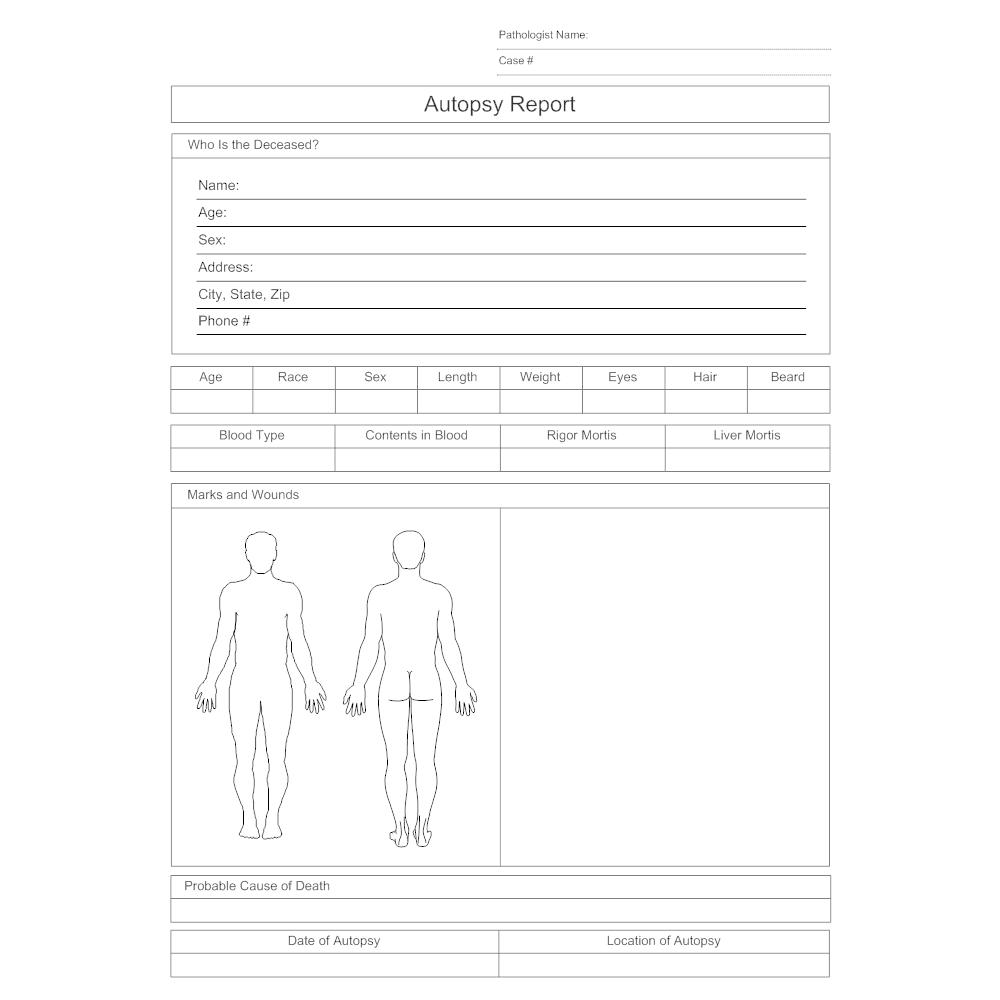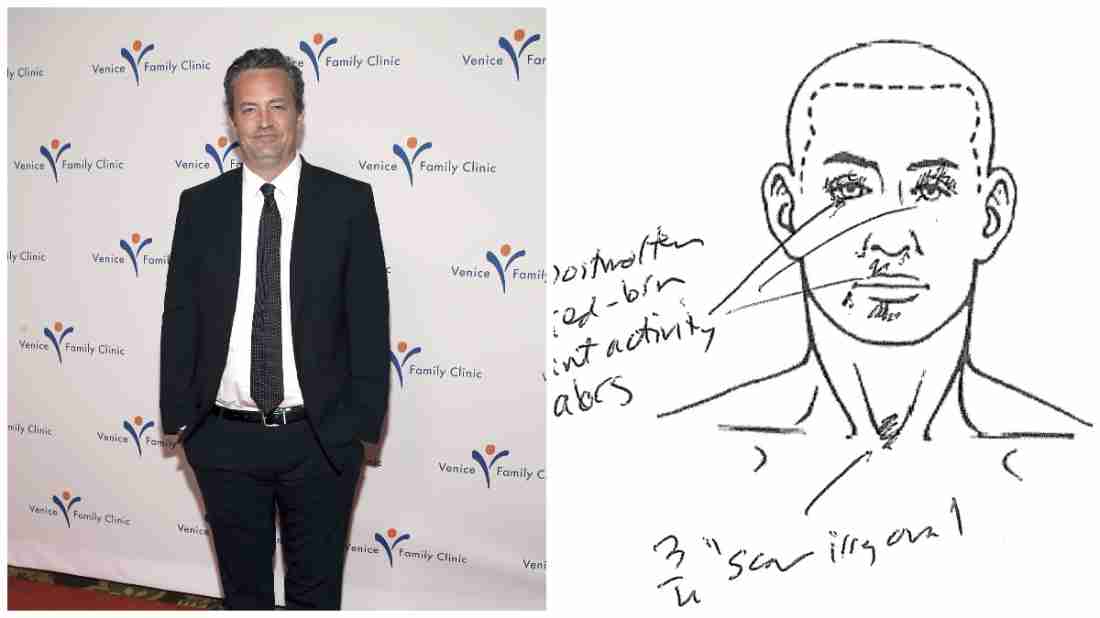When it comes to understanding the complexities surrounding a crooks autopsy report, it's important to delve into the details that often remain hidden from public view. The term "crooks autopsy report" refers to the official documentation produced after a thorough examination of a deceased individual suspected of criminal activities. This report holds significant importance in the legal and investigative processes. It provides critical insights into the circumstances surrounding a person's death, often revealing crucial evidence that can shape the course of justice.
The world of criminal investigations is shrouded in mystery, and the autopsy report plays a pivotal role in unraveling the truth. Whether it's a high-profile case or a lesser-known incident, the findings from an autopsy can make or break a case. For those seeking answers, understanding how these reports are compiled and what they reveal is essential. This article will explore the intricacies of crooks autopsy reports, breaking down the procedures, findings, and implications for the justice system.
As we dive deeper into this topic, we'll examine real-world examples, expert opinions, and authoritative sources to provide a comprehensive overview. Whether you're a legal professional, a curious reader, or someone interested in the workings of forensic science, this article aims to deliver valuable insights into the world of autopsy reports and their role in criminal investigations.
Read also:Sone436 Unlocking The Potential Of This Revolutionary Technology
What is a Crooks Autopsy Report?
An autopsy report, specifically in the context of individuals involved in criminal activities, is a detailed document that summarizes the findings from a post-mortem examination. This examination is conducted by a qualified medical examiner or pathologist, who meticulously investigates the body to determine the cause and manner of death. The report serves as an official record, often used in court proceedings, to provide clarity on the circumstances surrounding the death of a suspected criminal.
Key aspects of a crooks autopsy report:
- It includes detailed observations about external and internal bodily injuries.
- It provides toxicology results, revealing any substances present in the body at the time of death.
- It outlines the medical history and any pre-existing conditions that may have contributed to the death.
Understanding the structure and content of these reports is crucial for legal professionals, investigators, and even the general public who seek transparency in criminal cases. By examining these reports, stakeholders can gain a deeper understanding of the events leading up to a person's death and the implications for justice.
Why Are Crooks Autopsy Reports Important?
The significance of a crooks autopsy report extends beyond mere documentation. These reports are vital tools in the pursuit of justice, offering concrete evidence that can influence legal outcomes. They provide a factual basis for investigations, helping to establish whether a death was accidental, natural, or the result of foul play.
Impact on Legal Proceedings
In the courtroom, autopsy reports serve as powerful pieces of evidence. They can corroborate witness testimonies, validate investigative findings, or even challenge preconceived notions about a case. For instance, if an autopsy reveals that a suspected criminal died due to a cause unrelated to their alleged activities, it could significantly alter the trajectory of a trial.
Public Transparency and Accountability
Autopsy reports also play a role in ensuring transparency and accountability in the justice system. By making these reports accessible (where appropriate), the public can gain a better understanding of how deaths involving suspected criminals are handled. This transparency fosters trust between law enforcement agencies and the communities they serve.
Read also:Erome The Ultimate Guide To Understanding Its Impact And Relevance
The Process of Conducting an Autopsy
Conducting an autopsy is a meticulous and structured process that requires expertise and precision. Medical examiners follow a standardized protocol to ensure that all relevant information is captured accurately. Below is a breakdown of the key steps involved in performing an autopsy:
Preparation and Examination
- External examination: The body is thoroughly inspected for visible injuries, scars, or other markings.
- Photography: High-resolution images are taken to document the condition of the body.
- Collection of samples: Blood, tissue, and other biological samples are collected for further analysis.
Internal Examination
During the internal examination, the pathologist investigates the internal organs, looking for signs of trauma, disease, or other abnormalities. This phase often involves the removal and weighing of organs, as well as the documentation of their condition.
Toxicology and Further Testing
Toxicology tests are conducted to identify any drugs, poisons, or other substances present in the body. These tests can reveal crucial information about the cause of death, especially in cases where external injuries are not immediately apparent.
Common Findings in Crooks Autopsy Reports
While each case is unique, certain patterns and findings frequently appear in autopsy reports involving suspected criminals. Understanding these commonalities can provide valuable context for legal professionals and the public alike.
Physical Injuries
Autopsies often reveal signs of physical trauma, such as gunshot wounds, stab wounds, or blunt force injuries. These findings are meticulously documented, including the location, size, and depth of the injuries.
Toxicology Results
Drug and alcohol use are common factors in many criminal cases. Toxicology reports can indicate whether these substances played a role in the individual's death, providing critical context for investigators.
Pre-Existing Health Conditions
In some cases, pre-existing medical conditions contribute to the death of a suspected criminal. Autopsy reports may highlight issues such as heart disease, respiratory problems, or other health concerns that may have impacted the outcome.
Challenges in Interpreting Autopsy Reports
While autopsy reports are invaluable tools, they are not without their challenges. Interpreting these documents requires a deep understanding of forensic science and medical terminology. Below are some of the key challenges faced by those analyzing crooks autopsy reports:
Complex Medical Terminology
The language used in autopsy reports can be highly technical, making it difficult for non-experts to fully comprehend the findings. This complexity can lead to misunderstandings or misinterpretations if not properly explained.
Conflicting Evidence
In some cases, autopsy findings may contradict other evidence presented in a case. Resolving these discrepancies requires careful analysis and collaboration between medical examiners, investigators, and legal professionals.
Public Misconceptions
The public often holds misconceptions about the role and accuracy of autopsy reports. Educating stakeholders about the limitations and capabilities of these documents is essential for fostering realistic expectations.
Legal Implications of Crooks Autopsy Reports
The findings from an autopsy report can have far-reaching legal implications, influencing everything from criminal charges to civil lawsuits. Below are some of the key ways in which these reports impact the legal landscape:
Determining Criminal Liability
If an autopsy reveals that a suspected criminal's death was caused by another individual's actions, it can lead to criminal charges being filed. Conversely, if the death was accidental or self-inflicted, it may absolve others of liability.
Supporting Civil Claims
In cases where wrongful death is alleged, autopsy reports can provide critical evidence to support or refute civil claims. These reports often play a central role in determining compensation and liability in such cases.
Real-World Examples of Crooks Autopsy Reports
To better understand the impact of crooks autopsy reports, let's examine a few real-world examples. These cases illustrate the importance of these documents in shaping legal outcomes and public perception.
Case Study 1: High-Profile Criminal Death
In a widely publicized case, the autopsy report of a notorious criminal revealed that their death was caused by a rare medical condition, rather than foul play. This finding not only cleared other individuals of suspicion but also highlighted the importance of thorough investigations in high-profile cases.
Case Study 2: Drug-Related Death
Another case involved a suspected drug trafficker whose autopsy revealed lethal levels of a synthetic opioid in their system. This finding supported the prosecution's argument that the individual's death was a result of their criminal activities, leading to convictions for related charges.
Expert Opinions on Crooks Autopsy Reports
Experts in forensic science and legal fields offer valuable insights into the significance of crooks autopsy reports. Below are some key opinions from authoritative sources:
Forensic Pathologists
Forensic pathologists emphasize the importance of objectivity and thoroughness in conducting autopsies. They stress that these reports must be free from bias and based solely on scientific evidence.
Legal Professionals
Attorneys and judges highlight the critical role that autopsy reports play in legal proceedings. They stress the need for accurate and detailed documentation to ensure fair and just outcomes.
Conclusion
In conclusion, crooks autopsy reports are indispensable tools in the pursuit of justice. They provide critical insights into the circumstances surrounding a suspected criminal's death, influencing legal proceedings and public perception. By understanding the procedures, findings, and implications of these reports, we can better appreciate their role in the justice system.
We invite you to share your thoughts and questions in the comments section below. For more informative articles on forensic science and legal topics, explore our other content. Together, let's continue the conversation about transparency, accountability, and the pursuit of truth.
Table of Contents
- What is a Crooks Autopsy Report?
- Why Are Crooks Autopsy Reports Important?
- The Process of Conducting an Autopsy
- Common Findings in Crooks Autopsy Reports
- Challenges in Interpreting Autopsy Reports
- Legal Implications of Crooks Autopsy Reports
- Real-World Examples of Crooks Autopsy Reports
- Expert Opinions on Crooks Autopsy Reports
- Conclusion


